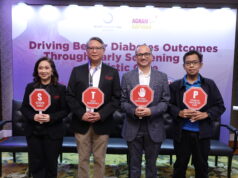Medicine Cabinet
by Reiner W. Gloor
On July 29, “Oplan Goodbye Bulate,” or the National School De-worming Campaign, was launched with the ambitious objective of de-worming in one day about 14 million school children studying in the public elementary schools. Most of the regions surpassed the recommended target set by the World Health Organization (WHO), or 75% de-worming coverage. Data from the Department of Health estimate that as of Aug. 19, about 11,470,245 out of 14,740,075, or 80% of enrolled students, have been de-wormed nationwide.
On a global scale, the US Centers for Disease Control and Prevention (CDC) said that an estimated 576 million to 740 million people are infected with hookworm.
Hookworm, Ascaris, and whipworm are collectively known as soil-transmitted helminths (parasitic worms), and together, they all account for a major burden of disease worldwide. Soil-transmitted helminthiasis can cause poor physical growth, poor intellectual development in children, and can lead to anemia and malnutrition among children and women of child bearing age, health officials said. Abdominal pain, vomiting, and dizziness are among the symptoms normally associated this.
Helminths like hookworms live in the small intestine. Hookworm eggs are passed in the feces of an infected person. If the infected person defecates outside, such as in open fields, or if the feces of an infected person are used as fertilizer, eggs are deposited on the soil. They can then mature and hatch, releasing larvae (immature worms). The larvae mature into a form that can penetrate the skin of humans, the CDC warned. Hookworm infection is mainly acquired by walking barefoot on contaminated soil. One kind of hookworm can also be transmitted through the ingestion of larvae.
Aside from school children, people living in areas with warm and moist climates and where sanitation and hygiene are poor are at risk for hookworm infection if they walk barefoot or allow any parts of their skin to have direct contact with contaminated soil. Children who play in contaminated soil may also be at risk.
Most people infected with hookworms have no symptoms. However, some have gastrointestinal symptoms, especially persons who are infected for the first time. The most serious effects of hookworm infection are blood loss leading to anemia, in addition to protein loss.

Health experts say itching and a localized rash are often the first signs of infection. These symptoms occur when the larvae penetrate the skin. However, a person with a light infection may have no symptoms. A person with a heavy infection may experience abdominal pain, diarrhea, loss of appetite, weight loss, fatigue and anemia. In children, their physical and cognitive growth can be affected.
Hookworm infection is diagnosed by taking a stool sample and using a microscope to look for the presence of hookworm eggs. If a person is found to be infected with hookworm, infections are generally treated for one to three days with medication prescribed by a health professionals. The drugs are effective and appear to have few side effects. Iron supplements may be prescribed if the infected person has anemia.
The CDC said that in developing countries, groups at higher risk for soil-transmitted helminth infections are often treated without a prior stool examination. Treating in this way is called preventive treatment (or “preventive chemotherapy”).
The high-risk groups identified by the WHO are preschool and school-age children, women of childbearing age, including pregnant women in the 2nd and 3rd trimesters and lactating women, and adults in occupations where there is a high risk of heavy infections. School-age children are often treated through school-health programs and preschool children and pregnant women at visits to health clinics.
Log on to www.phap.org.ph and www.phapcares.org.ph. E-mail the author at reiner.gloor@gmail.com or check out the Department of Health Facebook page.



